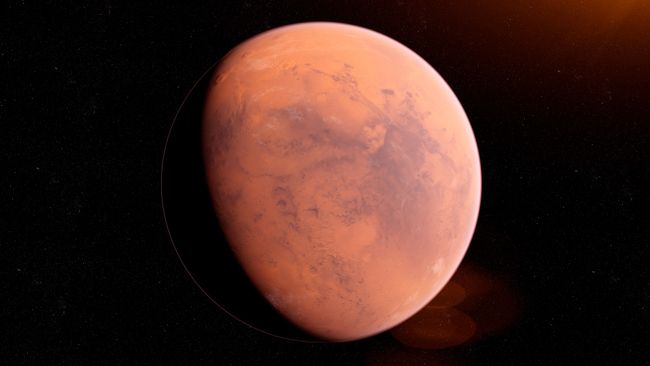The ocean floor undergoes significant changes every 2.4 million years due to the strong gravitational pull exerted by Mars on Earth.
A recent geological study proposes that Mars’ gravitational field exerts a force on Earth, gradually bringing it closer to the sun in cycles spanning millions of years. This phenomenon contributes to the long-term warming of our climate.
New research suggests that Mars’ gravitational pull on Earth could potentially have an impact on our planet’s climate. Geological evidence spanning over 65 million years and gathered from various locations worldwide indicates that deep-sea currents have experienced periods of varying strength. This recurring pattern, known as an “astronomical grand cycle,” occurs approximately every 2.4 million years.

During the stronger phases of these currents, referred to as “giant whirlpools” or eddies, they can reach the ocean’s deepest regions, known as the abyss. As revealed in a study published in the journal Nature Communications on Tuesday (March 12), these powerful currents gradually erode the substantial sediment deposits that accumulate during calmer periods within the cycle. Interestingly, these cycles align with the timing of gravitational interactions between Earth and Mars as they both orbit the sun.
According to Dietmar Müller, a co-author of the study and a professor of geophysics at the University of Sydney, the gravity fields of the planets in our solar system interact with each other, causing a phenomenon called resonance. This interaction alters the eccentricity of the planets, which measures the degree to which their orbits deviate from being perfectly circular.
The Earth experiences a slight gravitational pull from Mars, causing it to move closer to the sun and receive more solar radiation, resulting in a warmer climate. This phenomenon occurs over a span of 2.4 million years.
The researchers in the recent study utilized satellite data to analyze sediment accumulation on the ocean floor over millions of years. They identified gaps in the geological records where sediment deposition ceased during these astronomical cycles. The scientists suggest that this interruption could be attributed to intensified ocean currents due to warmer temperatures influenced by Mars’ gravitational force on Earth.
These findings indicate that Mars plays a role in shaping Earth’s climate, similar to the impact of passing stars and other celestial bodies. However, the observed warming effect is distinct from the global warming caused by human-induced greenhouse gas emissions, as highlighted by the authors.
Although speculative, the study proposes that this cycle could potentially help sustain deep ocean currents periodically if global warming weakens them. “We are aware of two distinct mechanisms that contribute to the strength of deep-water mixing in the oceans,” stated Müller. One of these mechanisms is the Atlantic Meridional Overturning Circulation (AMOC), which functions as an oceanic conveyor belt, transporting warm water from the tropics to the Northern Hemisphere and distributing heat deep into the ocean.
Our extensive deep-sea data covering a span of 65 million years indicates that warmer oceans exhibit a more robust deep circulation,” stated Adriana Dutkiewicz, the lead author of the study and a sedimentologist at the University of Sydney. “This phenomenon could potentially prevent the ocean from stagnating, even in the event of a slowdown or complete halt of the Atlantic meridional overturning circulation.”
Version 1: Our comprehensive deep-sea data, which covers a period of 65 million years, shows that warmer oceans have a more vigorous deep circulation,” stated Adriana Dutkiewicz, the lead author of the study and a sedimentologist at the University of Sydney. “This could potentially prevent the ocean from becoming stagnant, even if the Atlantic meridional overturning circulation slows down or stops completely.”
Do not forget to share your opinion with us to provide you with the best posts !



0 Comments